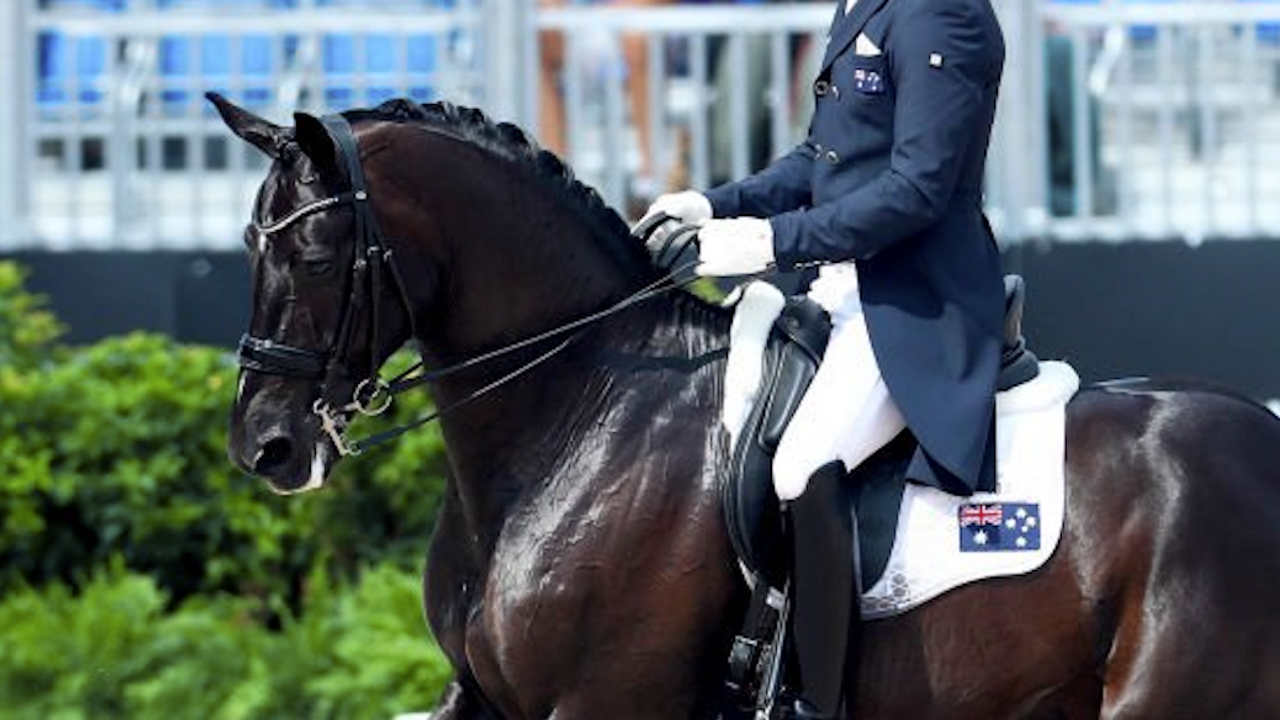The Correct Dressage Seat
Apr 26, 2022

Riding in a correct dressage seat is one of the most important things in dressage because it allows you to balance your horse properly, and deliver the aids needed to give the right instructions to your horse. Brett grew up in a horse family, so he's always ridden, but he's not always ridden quite like he does now.
"I remember when I was a young boy, I overheard a conversation between my parents. It was in the lead up to a show in which I was to ride in the Boy Rider class, and they were talking about my riding style. My dad was saying ‘I just don’t think he’s ever going to get it’! I guess after a while I did get it, but perhaps this goes to show that I’m not a natural, but I have been practising a long time, and in fact I continue to refine my dressage seat every day.” - Brett
Riding starts with YOU
Position Checklist
Each time Brett get in the saddle, he likes to work through a series of ‘checks’ to ensure he's in a correct dressage seat. It’s ideal if you have mirrors to get immediate feedback, but if not, you’ll need to get creative. Use a friend, a video, or any reflection can help.
- Check you’re in a place in the saddle in which you’re the easiest load to carry for the horse, and where your aids will go on properly. Make sure you're sitting on my seat bones with your knees in front of your chest. If you let your chest come in front of your knees, your lower leg comes back and then you end up leaning over the wither of the horse, and we don’t want to do that.
- Try not to have tension in your thigh. As soon as this tension creeps in you’ll find your lower legs come off the horse and you’ll start to get pushed up out of the saddle.
- When it comes to your upper body, firstly try to figure out where your body naturally wants to be. My tendency is to get a bit hollow-backed, and some people are the opposite, in more of a ‘chair’ seat.
Once you know what your default position is, you can begin to correct it. For example when Brett thinks about correcting his hollow back...
"I think about pushing my belly button up, without tightening or clenching. If you’re a chair-seated rider, you’ll want to try to sit a little taller and almost ‘hollow’ your back a little. Always try to keep your chest up and keep your upper body behind your knees."
- With your reins, it looks best to have your hands in front of the saddle and just above the horse’s wither. Everyone has different length arms, though, so you may need to let your upper arm come forward to achieve this hand position, or if your arms are long enough you can keep your elbows bent at your side.
- Try to ride as relaxed and loose as you can. Ride balanced and supple through your hips and lower back. Let your legs hang down around your horse. And lastly, your stirrups are not there to give you balance, they are purely to hold your toes up.
Rider alignment and balance
Our amazing in-house Sports Scientist Fiona Hargraves, always tells our members how every athlete from every sport needs effective equipment in order to perform at their best. For Equestrians, the saddle is the most important piece of equipment. More importantly how the saddle fits. But not for the horse...
"The saddle has to fit the rider before it fits the horse. Controversial!?” - Fiona
Of course, your saddle must fit your horse and provide comfort for them, but riding starts with you. So, adjusting your saddle to your specific needs is essential for creating accuracy in your position. Fiona’s advice is to beg, borrow, and steal every saddle you can to try a range of models.
This isn’t just about looking nice in the saddle. An effective position and seat allows you to give clear aids and to not interfere with the horse's natural balance. You, as the rider, need to sit over the horse's centre of gravity so that the horse is encouraged to put his energy under your centre of balance.
Everyone's body is different, and so no one saddle is the same. Being aware of your natural balance and position will allow you to confidently know how your saddle needs to be. Consider this a nudge to honour your own body type and riding style, and find a saddle that suits you. There’s no need to opt for what everyone else likes!
Ensuring that your riding is accurate, effective and meaningful means that your horse will be able to try their best. Making yourself better for your horse is the priority. It’s your ambition, not theirs, so you need to set them up for success, and that starts with you!

